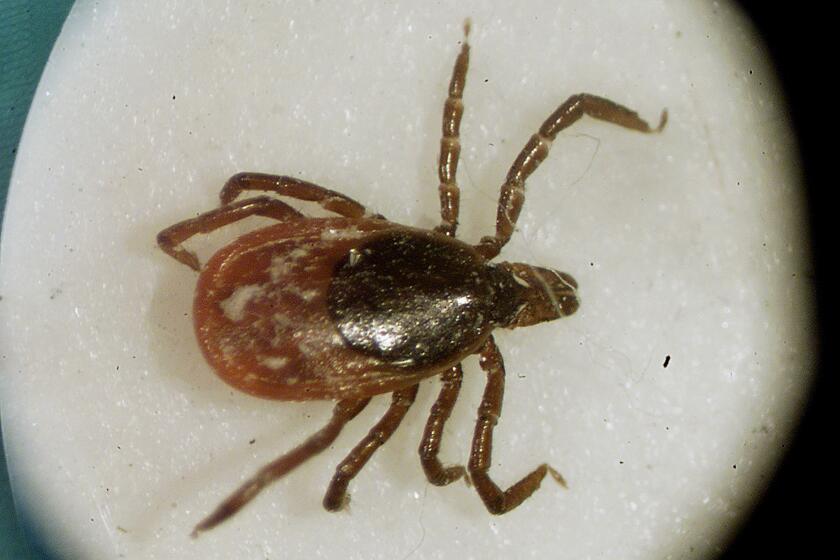A gross side effect from California’s extra wet winter: More disease-carrying ticks this spring

- Share via
Woodland and beach regions known for tick activity across northwest California could be even more prone to the disease-carrying arachnids this year after the state’s extremely wet winter, according to researchers who study ticks and Lyme disease.
“The longer and more rain usually means ticks are out for longer,” said Dan Salkeld, an ecologist at Colorado State University and a scientific advisor for the Bay Area Lyme Foundation. “Having a good rainy wet season is going to be good for ticks.”
And after one of the wettest few weeks on record this January, Salkeld said he expects ticks to be out in full force.
“They just like that moist climate,” he said. “Having this longer wet season just means that there will be this longer window that ticks are abundant.”
Ticks in Northern California typically come out after the first big rain in the fall — often around Halloween — and remain a problem for hikers and others enjoying the outdoors through late spring into early summer, Salkeld said. The western black-legged tick, the most common species in California, often carries diseases that can be transmitted to humans through a bite — especially Lyme disease.
Salkeld called much of northwest California a “hyper endemic” area for Lyme disease. Sierra, Santa Cruz, Mendocino, Mariposa and Humboldt counties have the highest rates of Lyme in the state, according to the latest California Department of Health report on vector-borne disease. However, these levels are still below those of many areas on the East Coast.
After a particularly wet year in 2017 in the Bay Area, the following spring saw elevated levels of ticks — which could also be the case next spring, Salkeld said. It takes about 18 months for the western black-legged tick to go through its life cycle.
“It may well be next spring that ticks are really booming,” he said.

In Southern California, the risk from ticks remains extremely low, Salkeld said, with the season much shorter due to the drier and warmer climate.
“There are ticks in Southern California, but it seems they have a narrow window in time when they’re an issue,” he said — and the ticks are significantly less likely to carry disease.
And though weather conditions may mean the risk for ticks is elevated, Salkeld said the chances of getting Lyme disease are still low. He doesn’t want to dissuade people from going outside but encourages them to take precautions, stay on trails, use repellent and do tick checks after hikes or outdoor excursions.
Lyme disease-carrying ticks usually found in woodlands and fields are spreading along California’s beaches, carried by an unknown host.
Ticks can’t fly or jump, but they do “quest,” hanging out on the ends of grasses or branches to try to grab on to a passerby.
“When you do get bitten, remove the tick as fast as you can,” Salkeld said. “Even if you’re in Southern California, it just diminishes the chance of any pathogen spread.”
More to Read
Sign up for Essential California
The most important California stories and recommendations in your inbox every morning.
You may occasionally receive promotional content from the Los Angeles Times.














